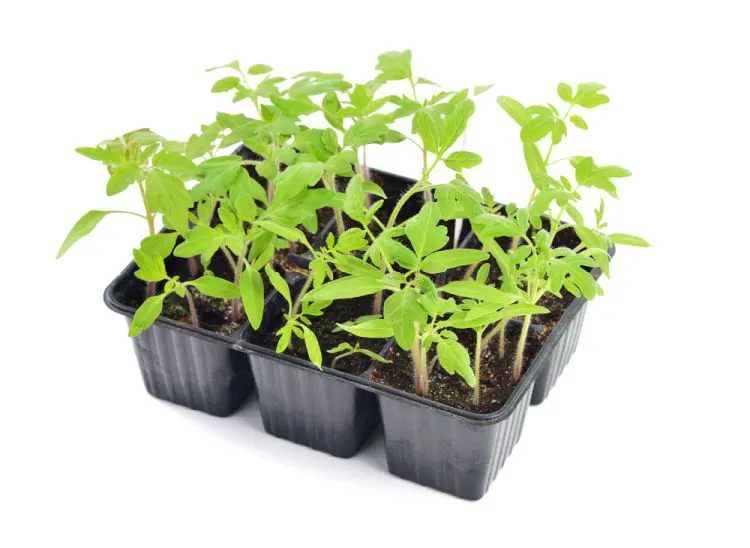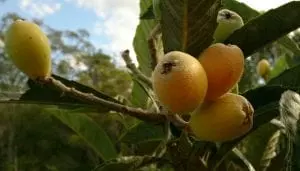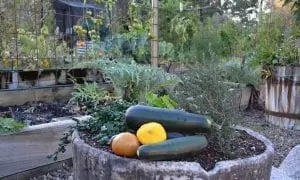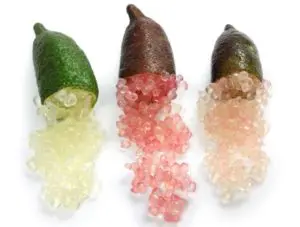When you first start vegetable gardening, the path to successful crops isn’t always clear. There’s a steep learning curve, especially when you’re starting your vegetables from seed. Variables like soil, watering, propagation, and maintenance can seem like minefields for the beginner.

One technique that is critical to the success of any food garden, is potting up promptly. In this article, we’ll look at what this means, why it is so important, and exactly how to do it.
What is ‘Potting Up Promptly’?
Potting up promptly means transplanting a small tree or seedling up to a larger pot as soon as they need it, so as to maximise their health and growth potential.
It’s easy to become a little lazy in the garden- not to mention, sometimes life really does get in the way. If you let them go a bit too long, seedlings & young plants will often ‘still look okay’ after as long as a couple of months in their starter trays, but leaving them too long really isn’t giving them the best start. Essentially, you’re letting them survive rather than thrive.

Once a seed has germinated into a seedling & grown its first set of true leaves, its growth rate & nutritional needs accelerate rapidly. By this stage, it will have used up all the energy contained in the seed itself, and needs added fuel & more space for growth. If not potted up at the right time, the seedling can quickly become root-bound and use up all the nutrition from the surrounding soil, which results in stunted growth. Potting up seedlings encourages your new plants to grow larger and stronger. It reduces stress and increases their vigour, which is exactly what you want before planting them out to their final position.


The two photos above are spinaches I sowed five months ago. Left, shows the seedlings I failed to plant out; they have thin stems, yellowed leaves, and some dead yellow leaves. If I hadn’t sown them into straight compost in a sizeable planter trough they’d be looking much worse. Right, is one that I planted out into a garden bed after 10 weeks. It’s bigger and healthier overall, with strong stems, better colour & leaves that are big enough to harvest.
Do All Plants Need to be Potted Up?
While it’s tempting to be that little bit lazy & skip this step, the extra effort of potting up gives enormous benefits to your plants & crops in the long run. Even ornamental houseplants like to be repotted occasionally, as they too will increase the size of their root system & run out of food.
Regardless of the season or your climate, most seedlings and saplings simply outgrow their starter pots. We usually germinate seeds in trays with individual cells or tiny pots for ease of handling and general efficiency. This does mean, however, that they can run out of nutrients & dry out quickly. This is true of all vegetables, but note that they do develop at different rates (gardening always gives you that extra twist, right?!). While vigorous growers that become huge fruiting plants like pumpkin, indeterminate tomatoes and zucchini will quickly outgrow their starter pots, others are a little slower. Leafy greens will be a bit more forgiving, as are most herbs and perennials.

Signs That It’s Time To Pot Up
Don’t worry if you’re new to gardening & haven’t quite got the hang of it yet: seedlings will give you clear signs when it’s time to pot them up. Here’s how they do it.
Firstly, they’ll develop what we call ‘true leaves’. True leaves are the second & subsequent set of leaves that appear on every seedling. As the name suggests, true leaves look the same as the mature leaves of any given plant.
This is opposed to the cotyledons, or seed leaves, which are the very first leaves that develop on a seedling. These look quite different to the true leaves, and will naturally fall off as the seedling matures into a plant. If you see them yellow and fall off in the first few weeks, this is a sign that it’s time to pot up.
If the true leaves turn yellow, this is also a sign that it’s time to transplant those seedlings out into the garden or to larger pots with fresh potting mix. Yellow leaves indicates lack of nutrition, so you’ll need to promptly pot up yellowed seedlings before they become permanently weak & stunted.


Another sign that it’s time to pot up is plants becoming root-bound. Granted, roots are under the soil, so this may not be obvious at first. Given time though, roots will begin to grow out of the bottom of pots, and soil will shrink away from the top of the pot and expose the roots. If you lift a young plant out of its pot and see the roots circling the root ball, then its overdue for planting out.
Overcrowding of seedlings is another sign that potting up needs to be done immediately. As their need for space, light & and nutrition increases, they begin to compete with each other when room runs out.
Quick Guide to Potting Up
When potting up, be sure to do so in the late afternoon if possible. This gives seedlings the coolth of an overnight to adjust to their new surroundings, and helps minimise transplant shock.
Additionally, water new transplants thoroughly but carefully. You don’t want to drown them, but you need to give the roots plenty of water. It’s best to use a small watering can with a thin spout, as this will allow you to direct & control the water flow as required. It’s often beneficial to mix a little seaweed extract like seasol into the watering can too.
Obviously, you’ll need to increase the size of the pot, but don’t go too big. Plants will do better if you size up pots a little at a time, rather than a whole lot all at once. Allowing a plant just an inch or two more is usually ideal. A too-large pot (especially for fruit trees) can cause root rot, overgrowth of the root system and general failure to thrive.












